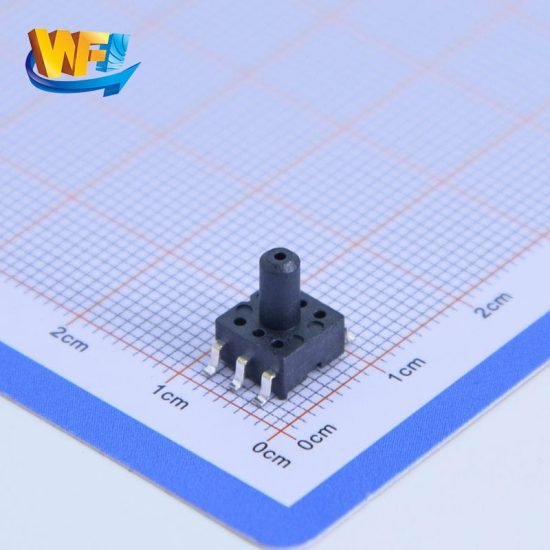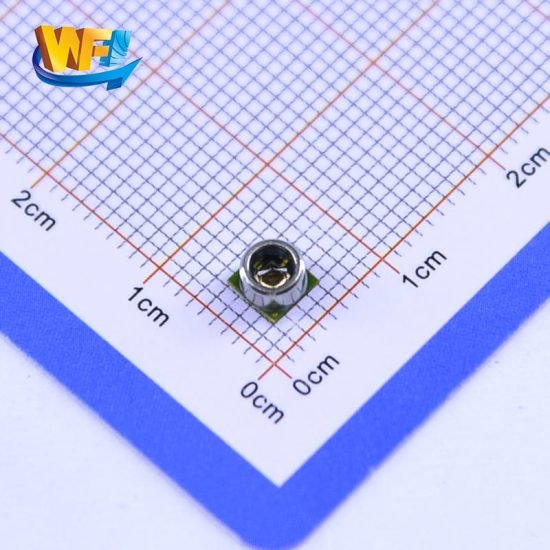ウェアラブル デバイスでの血圧モニタリングは大きな進歩を遂げています。 どのセンサータイプが最適ですか、その答えはあなたが思っているほど単純ではありません。主なオプションは 2 つあります。 ゲージ圧力センサー そして 絶対圧力センサー。それらを論理的に分析して、ウェアラブル血圧モニタリングに最も適しているものを考えてみましょう。

カタログ
理解を始めましょう!
ゲージ圧センサーと絶対圧センサー: 違いは何ですか?
まず、基本を正しく理解しましょう。
- ゲージ圧力センサー 圧力を測定する 大気圧に比べて。これは、外気圧の変化を常に調整することを意味し、動的な環境で血圧を測定する場合に役立ちます。
- 絶対圧力センサー 圧力を測定する 完全な真空と比較して。これにより、固定の基準点が得られ、特定の条件ではより安定しますが、環境の変化に対する適応性は低くなります。
では、ウェアラブルでの血圧監視にはどちらが適しているのでしょうか?答えは次のような要因によって異なります。 精度、圧力範囲、温度安定性、分解能、消費電力。
血圧センサーの選択で考慮すべき重要な要素
1. 精度: どの程度の精度が必要ですか?
血圧モニタリングでは、特に心臓血管の健康のようなデリケートなものを扱う場合、医療グレードの精度が非常に重要です。
- 通常はゲージ圧センサーが好まれます。 周囲条件に合わせて調整する 血圧をより直接的に表現します。
- ただし、絶対圧センサーは、 長期にわたる安定性を提供する 制御された環境ではより正確に行うことができます。
評決: 動的な現実世界の血圧モニタリング (屋外または身体活動中に着用するウェアラブルなど) の場合、 通常はゲージ圧センサーの方が良い選択です。
2. 圧力測定範囲: 血圧レベルに対応できますか?
血圧は通常、次のように測定されます。 mmHg (水銀柱ミリメートル)。人間の正常範囲は約 80~120mmHgただし、効果を発揮するには、センサーが必要です 0 から少なくとも 300 mmHg (または ~40 kPa) の範囲を快適にカバーします。
- ほとんどのウェアラブルデバイスは MEMSベースのゲージ圧センサー から測定できる 0–50 kPa (0 ~ 375 mmHg)これは血圧追跡に必要な量をはるかに超えています。
- 一方、絶対圧力センサーは、 多くの場合、はるかに広い範囲を持っています、時々、 100 kPa (~750 mmHg) 以上、このユースケースではやりすぎかもしれません。
評決: どちらのセンサー タイプも血圧を処理できますが、ゲージ センサーはより最適化された範囲を提供します。
3. 温度安定性: 体温に耐えられますか?
温度変動により、 圧力測定値に影響を与える、ウェアラブルは常に肌と接触しているため、これは重要な要素です。
- ゲージ圧センサーは温度変化に対してより敏感です ただし、これを補償するために動的に調整できます。
- 絶対圧力センサーは通常、温度変化に対してより安定しています。ただし、大気の変動を自然に補正するわけではないため、測定値に影響を与える可能性があります。
最新のセンサーには次のものがあります。 温度補償アルゴリズム, したがって、これは以前ほど問題ではなくなりました。
評決: 温度の安定性が主な懸念事項である場合、絶対圧力センサーの方がわずかに優れている可能性があります。
4. 解決策: どれくらい小さな変化を検出できるか?
血圧が高いため解像度が重要 微小な刻みで変動する特にリアルタイムで監視する場合。
- ほとんど ゲージ圧センサーの分解能は約 0.1 mmHg です。、つまり 十分すぎるほど 血圧追跡用。
- 絶対圧力センサーはさらに高性能になる可能性がありますが、多くの場合、 実際に必要なものに対して正確すぎる ウェアラブルデバイスで。
評決: ゲージ圧センサーは、物事を過度に複雑にすることなく、分解能のスイートスポットに到達します。
5. 消費電力: バッテリーはどのくらい持続しますか?
ウェアラブルデバイスが必要とするのは、 エネルギー効率の高い 確実にする 長いバッテリー寿命。
- ゲージ圧力センサー 通常消費する より低い電力 (~5 ~ 10 µW) なので、バッテリ駆動のデバイスでの継続的な監視に適しています。
- 絶対圧力センサー できる より多くの電力を消費する 頻繁に再校正が必要となる高精度アプリケーション向けに設計されているためです。
評決: 電力効率が高いという点で、ゲージ圧センサーがこれに勝ちます。
どれを選ぶべきですか?
デザインまたは選択している場合は、 ウェアラブル血圧計、 ゲージ圧センサー より良い選択肢です 99%の確率で。その理由は次のとおりです。
✔ 大気の状態に合わせて調整してくれる、実際の使用においてより信頼性が高くなります。
✔ 適切な圧力範囲を持っています 人間の血圧監視用。
✔ 電力効率が良い、これはウェアラブルにとって重要です。
✔ 十分な解像度がある 物事を過度に複雑にすることなく。
絶対圧力センサー 彼らの場所はあります、特に 管理された医療環境 極度の精度が必要な場合はもちろん、日常的なウェアラブルヘルステクノロジーの場合は、 ゲージ圧センサーが最適です。
最終考察: ウェアラブルにおける血圧センサーの将来
ウェアラブル健康モニタリングが進歩するにつれ、 ゲージ圧力センサー 今後も主力の選択肢となるでしょうが、 ハイブリッドソリューション 精度を向上させるために絶対圧力センシングの要素を組み込んでいます。 AI 主導のアルゴリズムは、圧力データの修正と分析においても大きな役割を果たし、より正確なウェアラブル血圧モニタリングにつながります。
それで、次に自慢のスマートウォッチを見たら、 “血圧追跡、” あなたは正確に知っているでしょう どのようなセンサー技術が組み込まれているのか、そしてそれがなぜ重要なのか。
上記の紹介は、圧力センサー技術のアプリケーションの表面をなぞっただけです。私たちは、さまざまな製品で使用されているさまざまなタイプのセンサー素子、それらがどのように機能するか、そしてそれらの長所と短所を引き続き調査していきます。ここで説明する内容についてさらに詳しく知りたい場合は、このガイドの後半にある関連コンテンツをご覧ください。時間がない場合は、ここをクリックしてこのガイドの詳細をダウンロードすることもできます。 空気圧センサー製品PDFデータ。
他のセンサー技術の詳細については、こちらをご覧ください。 センサーページにアクセスしてください。


